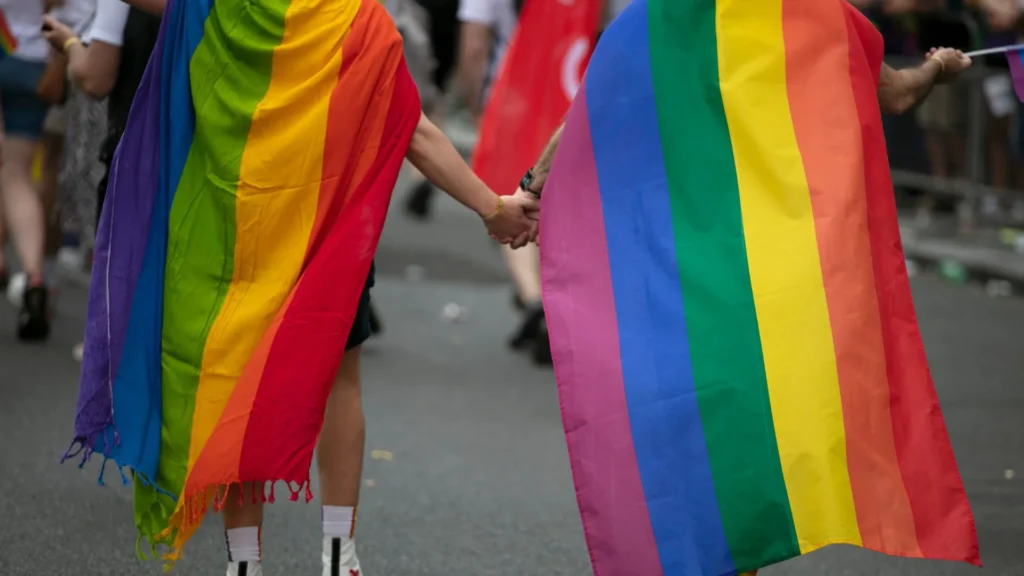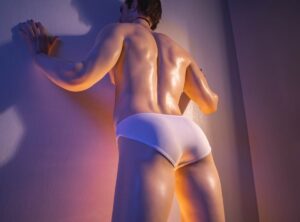Gay Internalized homophobia remains one of the most difficult emotional battles many gay men face. Even after coming out, the shame absorbed from family, religion, culture, or society can silently shape how you see your body, your desires, your relationships, and even your worth.
It doesn’t always look like fear or hatred. Sometimes it hides in subtle thoughts:
“I’m not attractive enough.”
“My desires are wrong.”
“Real intimacy is dangerous.”
This emotional weight affects gay self-acceptance, body image, confidence, and overall mental health. But healing is possible, and the journey from shame to freedom can be one of the most empowering transformations of your life.
This article explores how internalized homophobia forms, how it influences intimacy and self-expression, and how tools—from self-compassion to emotional support systems—help LGBTQ+ individuals reclaim authenticity.

Where Internalized Homophobia Comes From
Even if you live in a progressive environment today, most gay men grew up experiencing some form of rejection or discomfort around their identity. It may come from:
- Family discouragement or silence
- Religious teachings
- School bullying or social pressure
- Media portraying queer identities negatively
- Lack of visible LGBTQ+ role models
These messages accumulate and become internal beliefs. Instead of “being gay is wrong,” the mind shifts to:
“Something about me is wrong.”
This is the true harm of internalized homophobia—it turns society’s voice into your own inner critic.
How Internalized Homophobia Shapes Gay Body Image
Body image issues are significantly more prevalent among gay men than heterosexual men. Internalized homophobia contributes by creating unrealistic expectations:
- Feeling pressure to be hyper-muscular or ultra-lean
- Viewing certain body types as “less valid”
- Comparing yourself constantly to others
- Avoiding intimacy because of insecurities
Instead of seeing the body as a place of pleasure and connection, it becomes a battleground of anxiety and self-judgment.
Healing begins when you shift focus from “meeting a standard” to “feeling authentic in your own skin.”

The Mental Health Toll on LGBTQ+ Individuals
Internalized homophobia contributes to:
- Anxiety
- Depression
- Intimacy avoidance
- Emotional self-sabotage
- Difficulty trusting partners
- Fear of vulnerability
- Difficulty receiving love
These patterns don’t make someone weak— they are the result of years of emotional conditioning.
Recognizing them is the first step toward reclaiming mental wellness.
Relearning Intimacy Without Shame
Many gay men struggle to experience intimacy without fear or judgment—either toward themselves or from others. Healthy intimacy involves:
- Feeling safe in your body
- Allowing desire without guilt
- Trusting your emotional needs
- Accepting your fantasies
- Believing you are worthy of connection
When shame softens, the ability to form deeper emotional relationships strengthens.
How Tools Like Companion Dolls Support Healing
For some men, the journey toward self-acceptance requires rebuilding trust with their own bodies and desires. Companion dolls—realistic male figures designed for closeness—can be surprisingly effective emotional tools.
They help by providing:
1. A Judgment-Free Space
You can explore touch, affection, and personal intimacy without fear of criticism or rejection.
2. A Way to Reclaim Desire
Learning that your desires are valid is powerful. A doll creates a safe environment to reconnect with pleasure without shame.
3. Body Confidence Through Positive Experience
When you engage physically without anxiety, your body stops feeling like an enemy and becomes a source of comfort again.
4. Emotional Grounding & Stress Relief
Holding or lying next to a doll can reduce stress, strengthen emotional stability, and soothe the nervous system—especially for those dealing with past trauma or loneliness.
These tools don’t replace relationships; they help rebuild the emotional foundation that makes healthy relationships possible.
Steps Toward Gay Self-Acceptance
Healing internalized homophobia is not linear, but the process often includes:
- Challenging old beliefs
- Replacing shame with curiosity
- Practicing self-compassion
- Surrounding yourself with supportive LGBTQ+ spaces
- Allowing yourself pleasure without guilt
- Learning that vulnerability is strength
Freedom comes when you finally understand:
Your identity is not the problem—shame is.

FAQ
1. What is internalized homophobia?
It’s when negative messages about being gay become internal beliefs, affecting self-worth, confidence, intimacy, and mental health.
2. How does internalized homophobia affect gay body image?
It can create unrealistic standards and deep insecurities, leading many gay men to feel inadequate or unworthy of intimacy.
3. Can internalized homophobia impact mental health?
Yes. It contributes to anxiety, depression, low self-esteem, relationship difficulties, and emotional disconnection.
4. How can companion dolls help with emotional healing?
They offer a safe, judgment-free space to explore affection and physical comfort, helping rebuild self-trust and reduce emotional stress.
5. Is self-acceptance possible after years of shame?
Absolutely. With emotional tools, supportive environments, and intentional healing, gay men can overcome internalized homophobia and reclaim authenticity.
CTA — Reclaim Your Identity, Heal Your Intimacy
If you’re on the journey from shame to self-acceptance, you are not alone.
Safe, comforting intimacy tools—like lifelike male companion dolls—can support emotional healing, improve body confidence, and help rebuild trust with your own desires.
Explore a space where your identity—and pleasure—are fully valid:
👉 Visit Mendolls.com
Related article: https://lgbtqtherapyspace.com/articles/what-is-internalized-homophobia/


